Fukuyama City and Takeda Goichi
I made some modifications to a pop-up card I produced 10 years ago.
It is the former Fukuyama Public Hall that once existed in Fukuyama City.
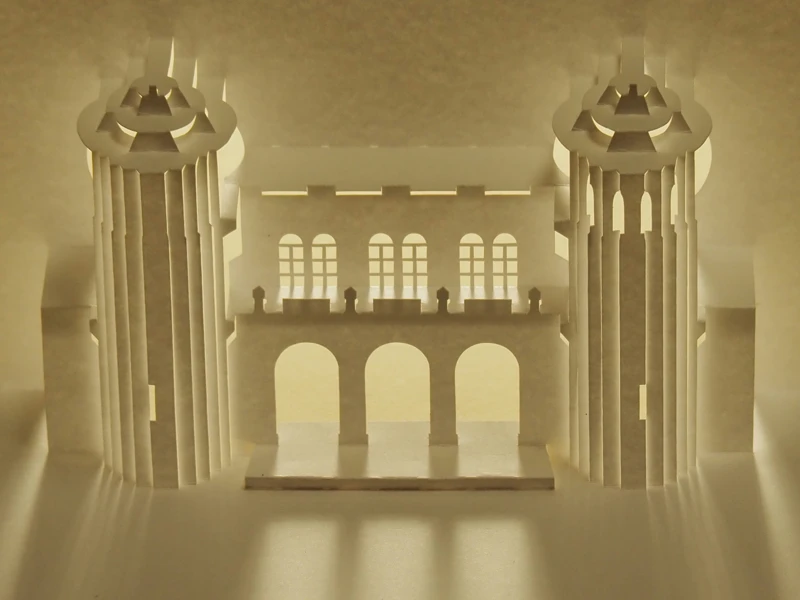
I added more connecting points between parts to make the card open and close more smoothly, and modified the shape of the details.
For reference, here is the pop-up card created in 2015.
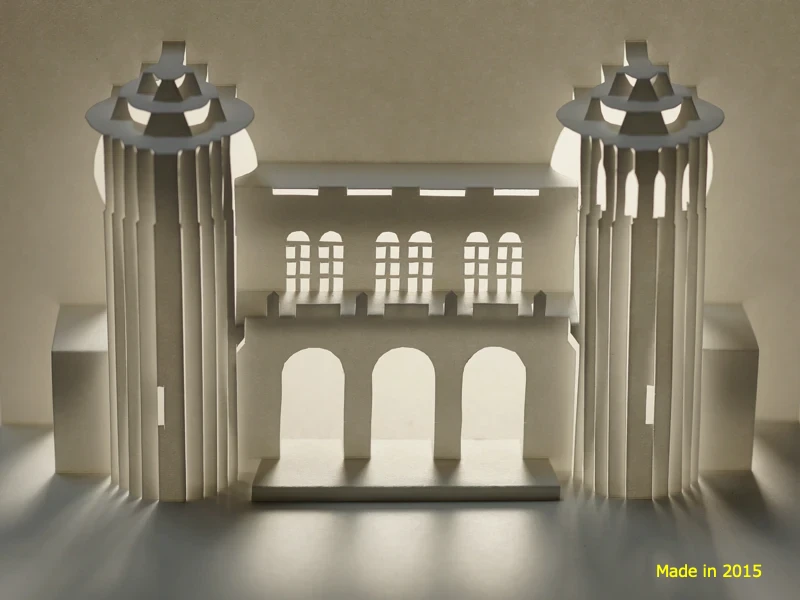
This building was built with Takeda Goichi (1872-1938) as design advisor.
There were several buildings designed by Takeda in Fukuyama.
He was born in Fukuyama, so there must be some connection with the city. However, he lived in Fukuyama until he was four years old, as his father’s job relocation took him from place to place.
Takeda Goichi’s relationship with Fukuyama is twofold.
The first is the decision of the city emblem of Fukuyama City.
In 1916, when Fukuyama City was established, the city solicited designs for the city emblem from the general public, but failed to collect any outstanding works. The city then asked Takeda, a professor at the Kyoto Higher School of Arts and Crafts, to select the best design. Takeda’s call for entries led to the selection of a design by Mabe Tokio, also an assistant professor at the Kyoto School of Arts and Crafts.
The second relationship is the design of public buildings in Fukuyama City.
To commemorate the 10th anniversary of the city’s incorporation, Fukuyama City planned to construct a public hall and other public buildings. When the city was having trouble raising funds, the Abe family, a former lord of Fukuyama, donated money, and on the recommendation of the Abe family, Takeda Goichi was put in charge of the design. (He was actually a design advisor.)
In addition to the public hall, he designed several other buildings and monuments.
“The collection of Dr. Takeda’s works" was published in 1933. It was published as a project to commemorate Takeda’s 60th birthday.
From this book, let me pick up some architectural structures and monuments built in Fukuyama City.
(1) Fukuyama Elementary School, Hoan-den Hall (repository for the Emperor’s photographs) (3 locations), completed in November 1912, stone construction, designed by Takeda Goichi, built by Uchida Tsurunosuke.
(2) Bronze statue of Isenokami Masahiro Abe, October 1922, stone, designed by Goichi Takeda, built by Uchida Tsurunosuke.
(3) Fukuyama City Public Hall, December 1926, two-story reinforced concrete building, Design Advisor: Takeda Goichi , Construction: Obayashi Corporation.
(4) Fukuyama City Office, June 1930, two-story reinforced concrete building (*) Design: Goichi Takeda Construction: Takahashi Fukusaburo.
(* According to Fukuyama City Council history and other records, the building was actually made of wood.)
Although not mentioned here, the City Council Chambers was built at the same time as the city office.
As shown in the figure, the city hall and the council chambers were connected by a corridor.
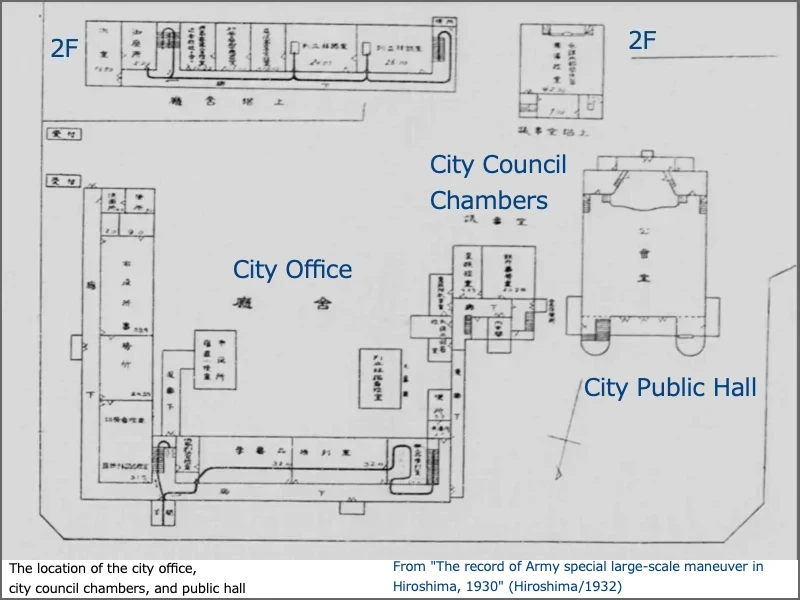
However, these structures do not remain today.
(1) It seems that the Hoan-den Halls were installed in three different schools, as the book mentions “three locations”.
Although specific records could not be found, they were probably dismantled after the World War II.
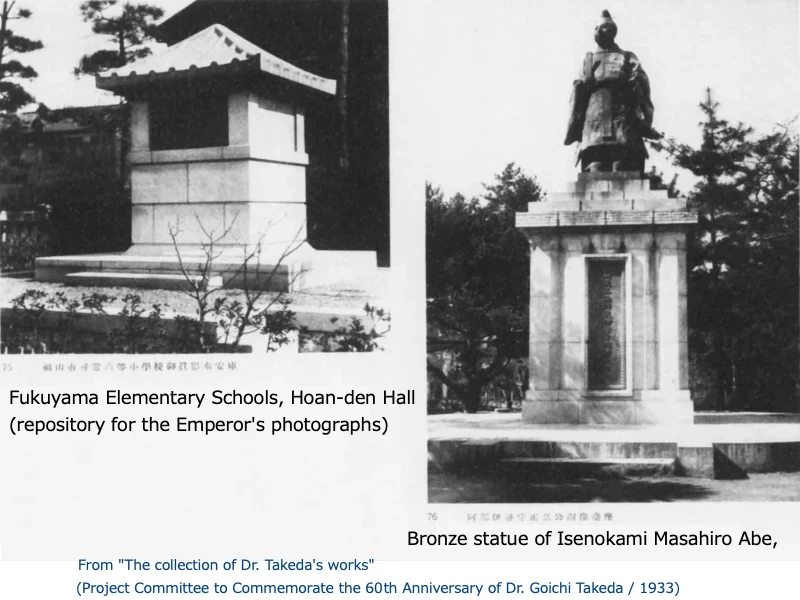
(2) The statue of Masahiro Abe was removed in 1943 due to wartime metal offerings. The pedestal may have remained for a while, but it is no longer extant. (The current statue is the second generation, erected in 1978.)
(3) The public hall was used as the city office after the city office burned down in 1945. Then it was extensively renovated in 1955, but was demolished in 1964 for the construction of the civic center.
(4a) City Office was destroyed by fire in an air raid on Fukuyama on August 8, 1945. Incendiary bombs were dropped on City Office, and the fire almost spread to the City Council Chambers through the corridor, but was stopped by water spraying, but City Office was completely destroyed by fire.
After the war, the remaining foundation was used to build a temporary building, which was completed in December 1945.
This building remained in use until 1959, when a new city hall was built.
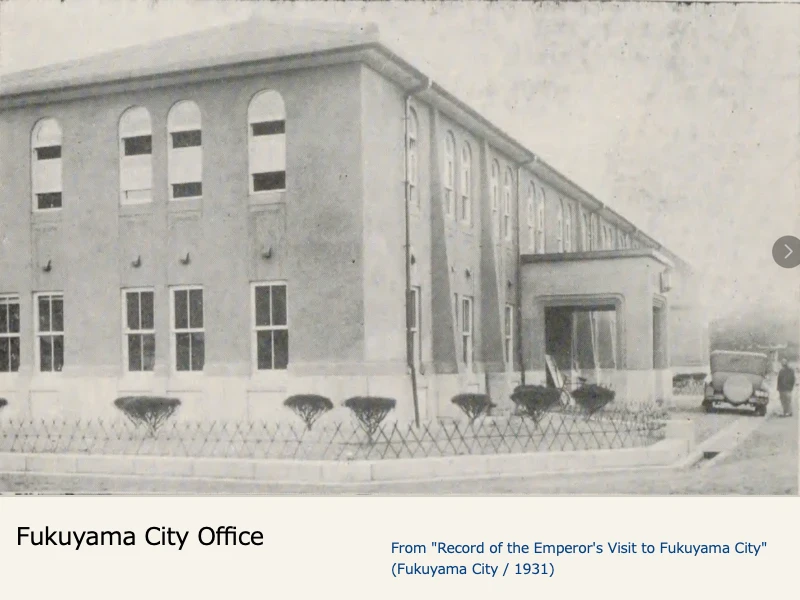
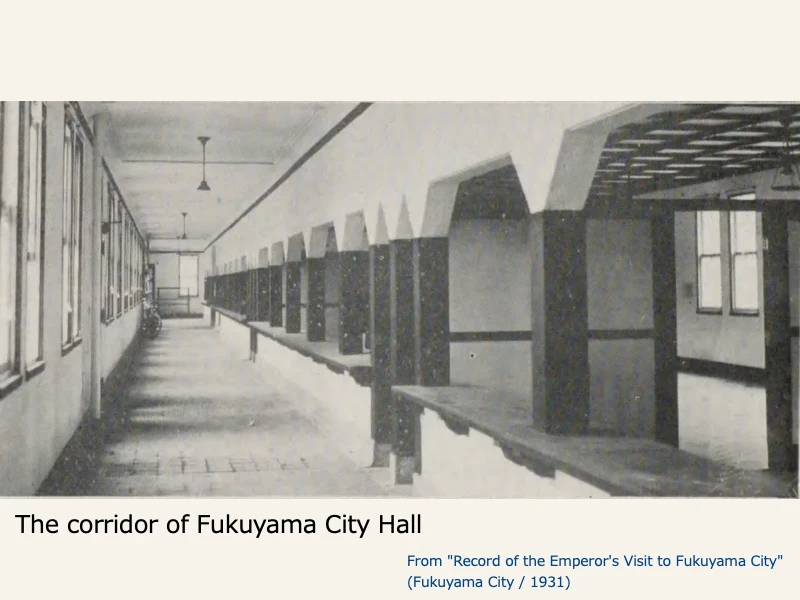
(4b) The City Council Chambers was not destroyed in the air raid. It was remodeled when the city office was newly built, and was used as Fukuyama City Central Community Center from 1960; when the civic hall was completed in 1966, the community center was also moved inside the hall, and the old building was later demolished.
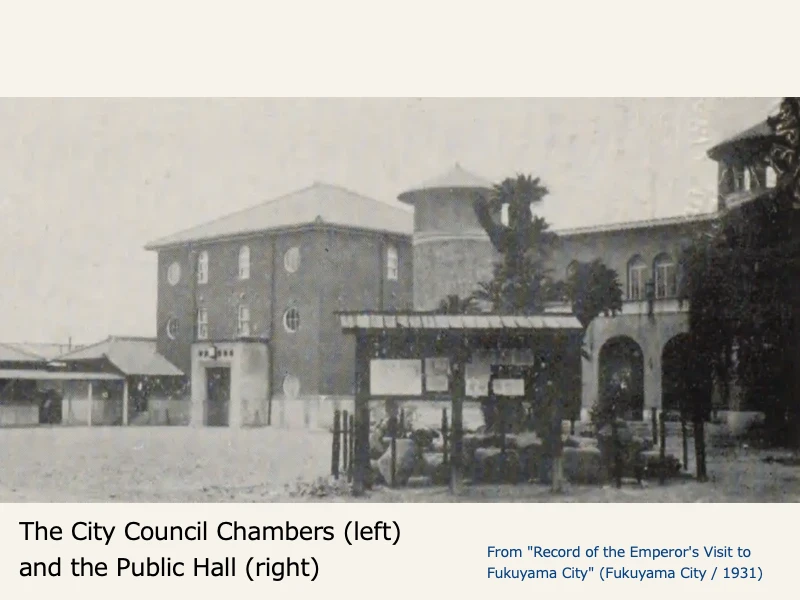
Therefore, the buildings in Fukuyama City related to Takeda Goichi no longer exist.
Finally, I am posting an aerial photograph taken in 1947 that shows the Public Office and Capitol Building.
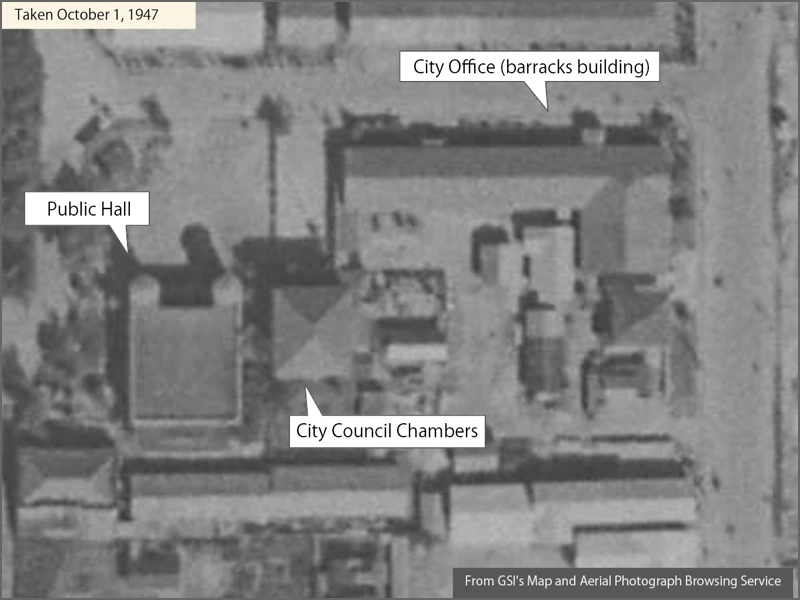
As noted above, the public hall and the council chambers survived the air raid.
The City Office was rebuilt as a temporary building after it burned down.
The location of the building is the same as before the fire because the foundation of the burnt down building was used. We can see that it was a one-story building, with the photo in Fukuyama City Sixtieth Anniversary Memorial Book.
[Reference] (all written in Japanese)
"Record of the Emperor’s Visit to Fukuyama City" (Fukuyama City / 1931)
“Fukuyama City Council History, Volume 1” (Fukuyama City Council History Compilation Committee / 1975)
“Fukuyama War Disaster Reconstruction Record” (Fukuyama War Disaster Reconstruction Record Compilation Committee / 1975)
“Fussetsu ni taete (weathered the hardship)” (Fukuyama City Sixtieth Anniversary Memorial Magazine “Fusetsu ni taete” Compilation Committee / 1977)
“Fukuyama City History, Volume II” (Fukuyama City History Compilation Committee / 1978)
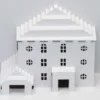
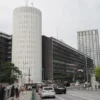
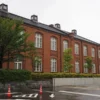
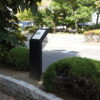
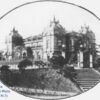
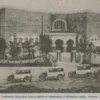
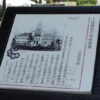
Discussion
New Comments
No comments yet. Be the first one!